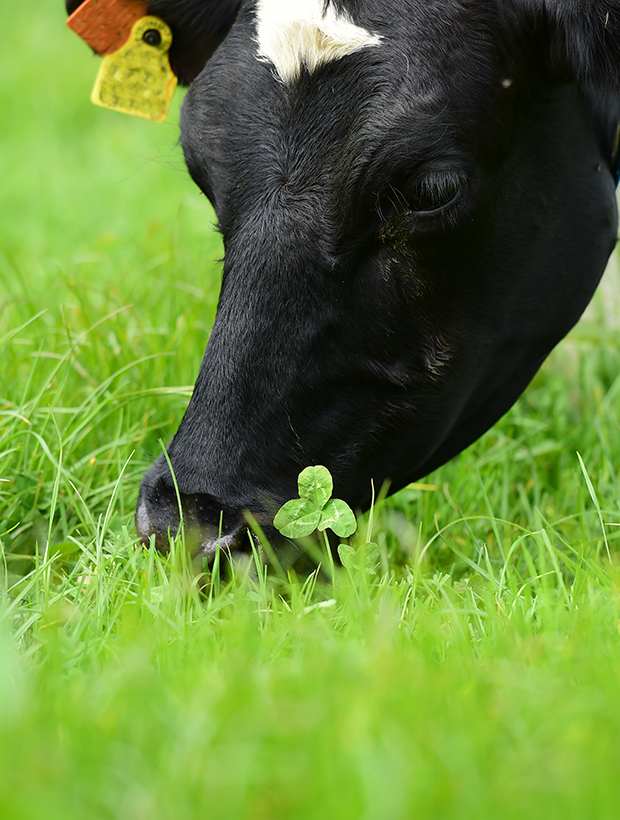16 March 2022
ST PATRICK WAS IRELAND’S FIRST ENVIRONMENTALIST, SAY SCIENTISTS
As Ireland and various parts of the world prepare to go green to celebrate St Patrick’s Day on March 17th, leading agri-food scientists have credited Ireland’s patron saint with being one of the world’s first environmentalists


More than 1,500 years after St Patrick used the three leaves of the shamrock as a symbol to explain the holy trinity, research shows that another, related, plant, white clover, is playing an important role in helping Ireland to combat climate change. Scientists at VistaMilk, the Science Foundation Ireland agri-food research centre, say their studies[1] show that having clover planted in fields where cows graze can reduce the need for dairy farmers to use fertiliser nitrogen by up to 40pc.
Clover reintroduces nitrogen into soil naturally from the atmosphere, provides a tasty treat for cows and helps increase the amount of milk they produce. That means farmers who grow clover among the grass in their fields can significantly lower the carbon footprint of their dairy produce.
Deirdre Hennessy, VistaMilk Funded Investigator and Senior Teagasc Research Officer, said: “It appears that St Patrick, even if he didn’t know it, was something of a visionary when it comes to the environment. We’re all familiar with his ‘three leaves’ explanation, so is it a coincidence that we have identified three main benefits for farms and the farmers that incorporate white clover into their grassland management processes?
“Clover reduces the need for excessive fertiliser use, improves feed quality and increases milk yields. From a farmer’s perspective, this trinity of benefits has huge significance as well. It means that they are reducing their reliance on artificial fertiliser, which saves money and time; they are improving productivity, which enhances their income; and they are mitigating environmental impact by reducing greenhouse gas emissions (nitrous oxide) from fertiliser use.
“All of this shows that through proper grassland management, we can avoid a reduction in the national herd[2] and safeguard our farming heritage by sustaining the viability of family-run farms well into the future. We can all learn a lot of lessons from the humble clover.”
Incorporating white clover in pastureland also provides an important source of nectar for insects that pollinate, including bees, and the biodiversity in the soil below our feet.
For consumers of dairy products, there’s reassurance to be had that milk produced from grasslands which include white clover provides high quality and tasty Irish dairy which is now more sustainably produced.
Deirdre added: “We celebrate St Patrick every year, but this year, alongside his civilising and snake charming skills, I think it also makes sense to recognise the important role clover, a relation of the Ireland’s national plant, the shamrock, can play in our pasture-based milk production systems.
“Shamrock and other clovers are an essential part of Irish culture and I for one will be covered from head to toe on the 17th. My hope is that, in the near future, so will most of our pasture.”
For more information, or to arrange an interview with A VistaMilk spokesperson:
Jeremy Probert | 4TC | jeremy@4TC.ie | 00 353 (0) 89 700 0792 |www.4TC.ie
Richard Burke | richard@4TC.ie | 00 353 (0) 86 8167822 | www.4TC.ie
[1] Studies published by the VistaMilk research group demonstrate that the correct and managed introduction of clover onto grasslands can reduce farmers dependency on fertiliser from an average of 250 kg per hectare for grass-only to 150 kg per hectare effectively reducing usage by up to 40%. Other studies have shown clover also has the benefit of increasing yield by 1-4 tonnes per hectare. Reduction in chemical fertiliser usage also reduces the risk of harmful runoff and associated impact on waterways.
[2] National herd numbers in 2021 are less than in the 1980s
